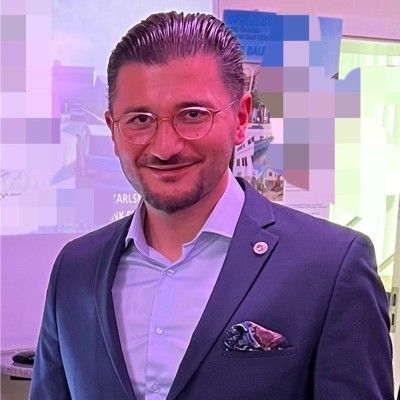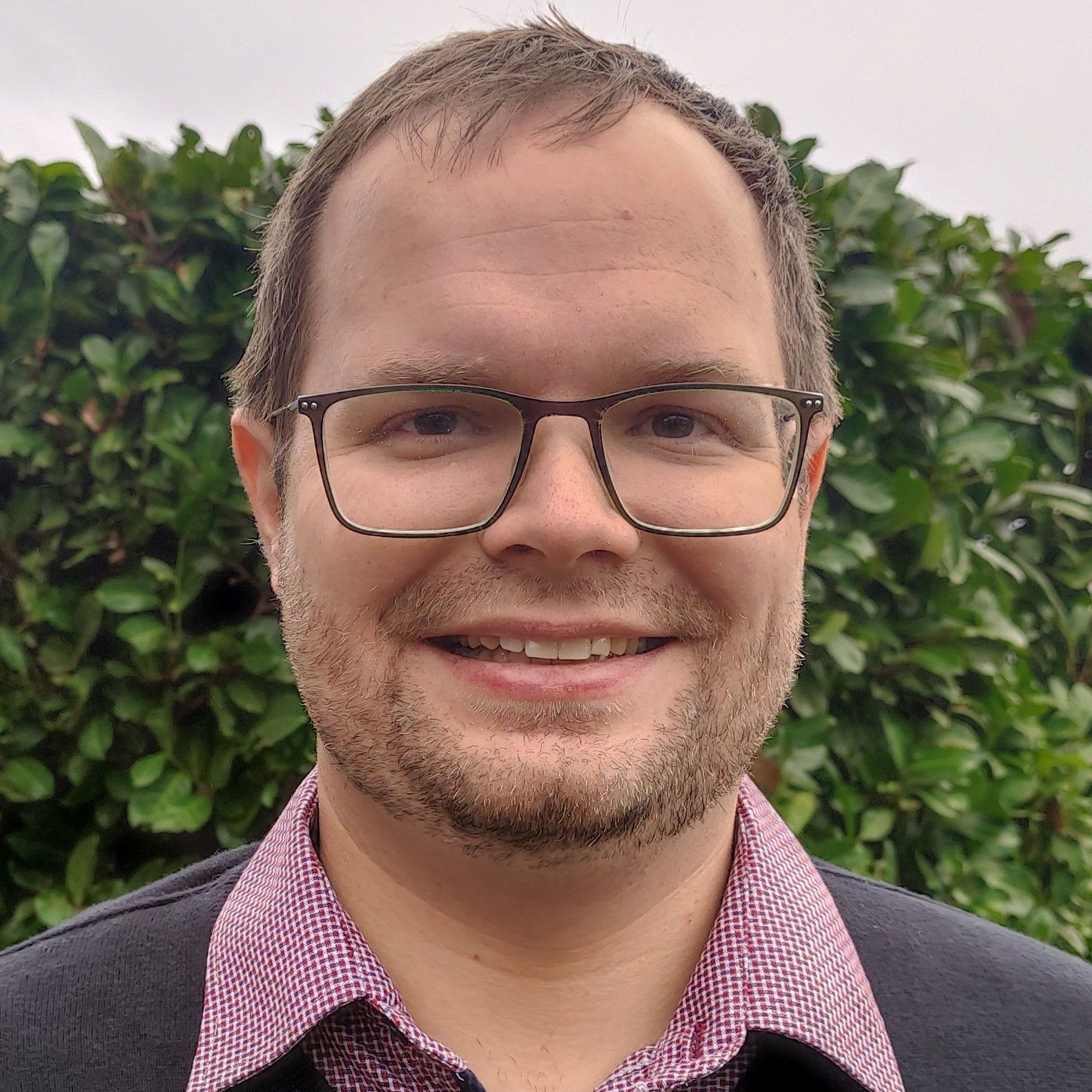Agenda
Program of the User Congress Connectors 2023
3 Days of Concentrated Connector Know-How
From Single Pair Ethernet, intelligent connectors, materials and coatings to additive manufacturing of connectors: This year's user congress program will again offer a wide range of topics.
On the first day, visitors can learn about the basics of connection technology in parallel basic seminars.
Our service for the participants in the basic seminars: You will receive the practical connector handbook worth € 89.80.
On the second and third day of the Connectors User Congress, the participants will receive in-depth first-hand know-how in numerous presentations by experts from industry, science and research.
Please note: The conference language is German.
Monday, June 12, 2023 - Basic Seminars
Time
Program Item
11:00 a.m. - 12:30 p.m.
Parallel Basic Seminars - Session I
-
Seminar 1: Connectors - Important Characteristics and Terms
Instructor: Dr.-Ing. Helmut Katzier | Ingenieurbüro für Aufbau- und Verbindungstechnik
What you will learn: Important characteristic values for connectors, technical explanation of the characteristic values and relevance of the characteristic values in various applications.
Description: In the field of electrical connectors, many terms from different technical disciplines are used, the precise knowledge of which is of great importance in the cooperation between users and manufacturers. Terms such as contact overlap, relaxation, gas-tight connections or contact corrosion are frequently used, but their exact meaning is not always familiar to everyone. Particularly during failure analysis and troubleshooting, it is important that the interlocutors know which aspects are being discussed. In the seminar, the most important technical terms of electrical connectors are explained. All relevant areas from mechanics, electrical engineering, materials science and qualification are covered. For each technical term there is a precise definition, a basic technical explanation and an explanation of the meaning of the term in the event of a fault. The aim of the basic seminar is to provide participants with a glossary at the end, which they can use to look up the many different terms in the field of electrical connectors quickly and in a well-founded manner.
-
Seminar 2: Basics of Contact Physics
Instructor: Dr. Frank Ostendorf | TE Connectivity GmbH
What you will learn: Basics of electrical connector contacts, influence of coating and base materials and aging and failure mechanisms of connector contacts.
Description: The basic seminar introduces the fundamentals of contact physics and explains important terms and the occurrence of physical quantities such as contact resistance, contact heating and derating. These phenomena are related to the contact surfaces and the contact coating. The 'contact behavior' of a connector must be considered as a system property resulting from the interaction of contact coating, connector design, electrical load, requirement profile and the environment. The seminar is divided into the following sections:
- Contact physics fundamentals of the dormant contact
- Measurement and simulation of contact surfaces and contact materials
- Contact physics comparison of standard surfaces for connectors
- Contact heating and derating
- Fretting corrosion
- Contact behavior in relation to intermediate layers
- Degradation mechanisms of connector contacts
-
Seminar 3: Copper Materials for Connectors
Instructor: Stephan Gross | Boway GmbH
What you will learn: Standard copper and copper materials, high performance copper materials and technical properties & surfaces.
Description: Selecting the right copper and copper alloys is a challenging topic. For many connector designers/engineers it is not always easy to choose the technically and also commercially correct material. The seminar covers all the basics relevant to connectors and provides information on these semi-finished products, including excursuses on mechanical properties, physical properties and a brief overview of the technically relevant surfaces with a focus on tin. Furthermore, the speaker will give insights into the selection of critical parameters as well as the pitfalls that lurk here.
12:30 - 1:30 p.m.
Lunch Break
1:30 - 3:00 p.m.
Parallel Basic Seminars - Session II
-
Seminar 4: "The Steckverbinarium"
Instructor: Herbert Endres | EndresConsult
What you will learn: Understanding about connector components, materials, and properties, and how to weigh the tradeoffs for each application.
Description: This connector calendar highlights the interrelationships and trade-offs for connector selection and application, and provides the basic knowledge to understand the characteristics and electrical data. It explains fundamentals, material selection in manufacturing, physical characteristics, processing techniques, and the resulting relationships for function and application. The fourteen chapters cover:
- What is a connector
- Connector components
- Connection techniques
- Insulator materials
- Contact Materials
- Contact Surfaces
- Contact resistance
- Shielding measures
- Interlocking of the connectors
- Housing and mechanics
- Power electronics
- High data rates
- Further processing in the process
- Connector selection
In the chapters, the differences are highlighted in detail and the advantages and disadvantages of the individual materials and manufacturing and application processes are presented, weighed against each other and evaluated. The application limits (current load at higher ambient temperatures) as well as the behavior at highest data rates are discussed. The connector set is not intended to be a purchasing aid, but rather a compendium of the diversity of properties, designs and processing options. It shows, independent of manufacturers, which alternatives are available and what the selection of certain peculiarities entails, for better or for worse.
-
Seminar 5: Surface Coating of Contact Materials
Instructor: Markus Klingenberg | IMO Oberflächentechnik GmbH
What you will learn: Surface properties and geometric requirements of the base material, advantages and disadvantages of the coating metals used and the differences between strip and single electroplating.
Description: The seminar will cover the theoretical principles and laws of electroplating. Influences on the deposition and a general process sequence for coating parts complete the theoretical basics. For the quality of the coating, many requirements of the base material, the product design and the material selection have to be fulfilled. These are dealt with in detail and, in addition to the surface properties and geometric requirements of the base material, the interaction between the base material and the coating material is also taught. The functional meanings and advantages and disadvantages of the plating metals used in connector and electrical engineering are discussed, along with current trends. Single part plating techniques, such as barrel, vibrobot, and rack processes, will be illustrated with the help of films, and the possibilities of plating will be introduced to the audience with the help of product examples. Selective coating of individual parts completes the portfolio of bulk material coating. The differences and advantages of strip electroplating compared to single part electroplating then form the transition to coil coating. Here, the special process sequence for coil plating is discussed once again and the various processes, such as dip, brush, strip and spot techniques with the aid of films using various selective tools, are explained. In addition, the process-related tolerances and specifications of the various techniques are explained as well as the dimensional limits of strip plating technology. Process experiences and product examples from practice support the lecture.
-
Seminar 6: Selection of Plastics for Connectors
Instructor: Martin Räthlein | Rosenberger GmbH & Co. KG
What you will learn: Requirements for plastics for connectors, material properties of the various plastics, test methods for plastics
Description:In particular, fire properties, thermal, mechanical and electrical properties of engineering plastics are discussed for material selection for connectors, also using examples. The very different requirements resulting from the various markets (automotive, electrical, electronics) are taken into account.
After the lecture, the audience will be able to select the material that best meets the respective requirements from the large number of different plastic types.
3:00 - 3:30 p.m.
Coffee Break
Congress Kick Off
3:30 - 3:50 p.m.
Impulse Lecture
Sustainability - Deadspoken live longer
-
Abstract
Who would have thought that the idea of sustainability, already believed to be dead, would experience a renaissance? Every second company, from carpenters to large corporations, is currently claiming to be sustainable. But what are we to make of it? And above all, what is reality and what is greenwashing? The topic also plays a major role in the electronics industry, partly for legal reasons and partly for image reasons, but rarely do the deeds go beyond the minimum. Not only are we a long way from the spirit of the definition as adopted by the Brundtland Commission in 1987, the situation with regard to climate change and environmental destruction has deteriorated further. What is needed is a reset and a reality check.

Business Strategy Specialist and Chairman of the Board FBDi e.V.
3:50 - 4:50 p.m.
Expert Round Table Discussion
Product Carbon Footprint: Sustainability in the Connector Industry
The CO2 footprint at the product level is a very complex topic, where a lot is currently changing in the production processes. There is already a need for action on the part of manufacturers and suppliers, but also OEMs. What do you have to be prepared for, how do you interpret the requirements and data, and how do you maneuver through the bureaucratic jungle? Answers will be provided by 9 experts in the panel discussion.
Weidmüller Interface GmbH & Co. KG
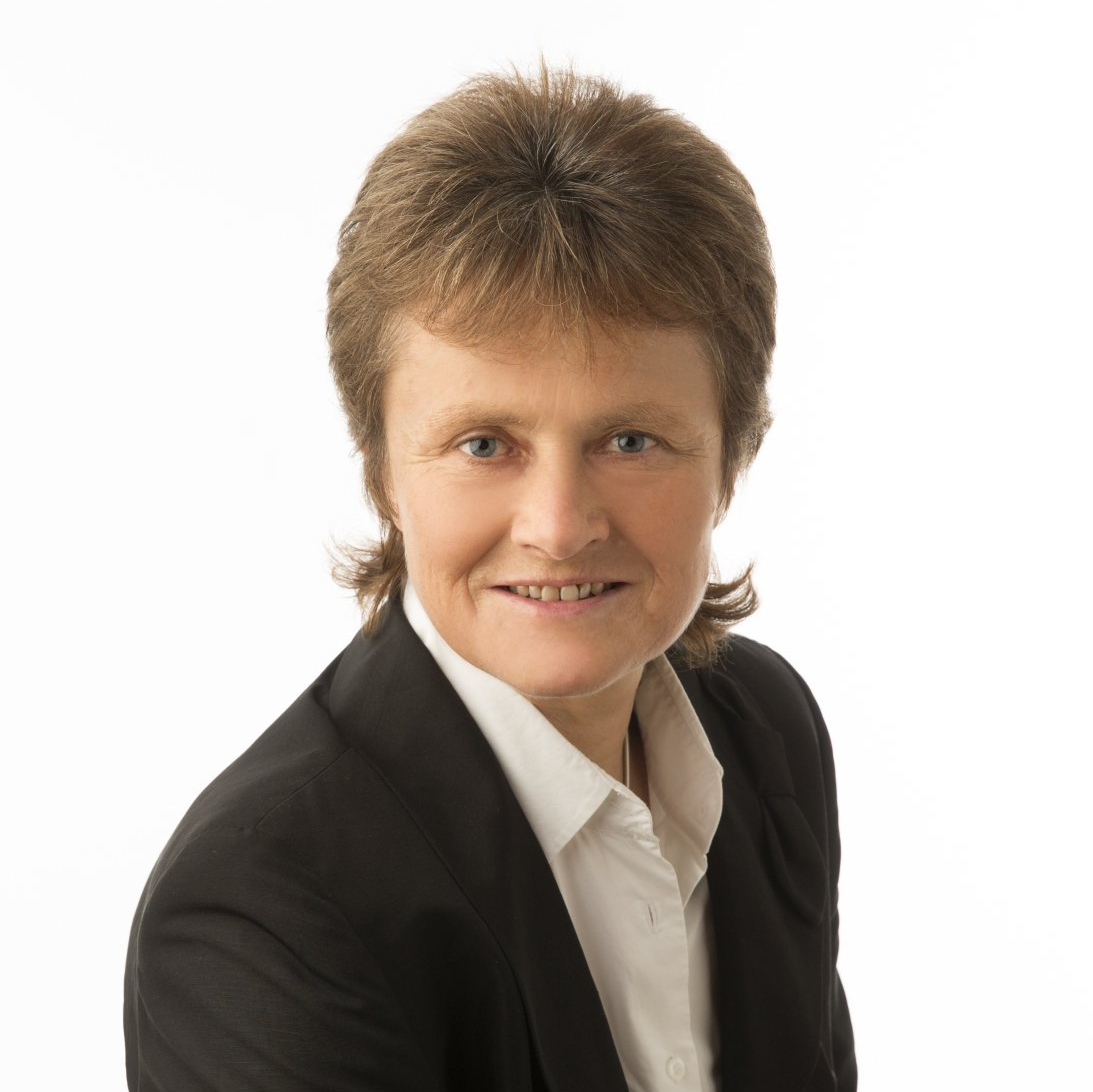
TE Connectivity Germany GmbH
TE Connectivity Germany GmbH
BASF Polyurethanes GmbH
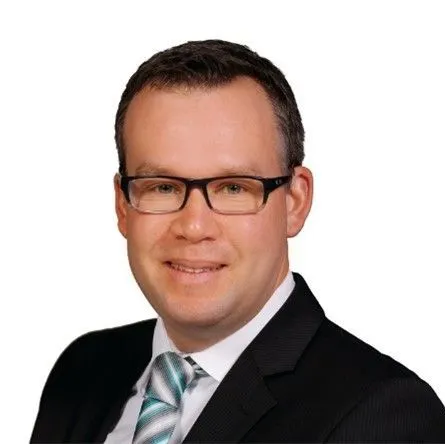
PHOENIX CONTACT Gmbh & Co. KG

FBDi e.V.

ELEKTRONIKPRAXIS
5:00 - 6:00 p.m.
"Poster Slam" - In short presentations, the speakers present their topics on the podium. The best presentation will then be honored with an award by the audience.
Focus: Connection Technology
Well Crimped - Still Poorly Connected
-
Summary
In this presentation, we would like to use a real defect analysis to show you how creative and innovative analysis methods can be used to go beyond standard methods and analyze defect patterns of crimp connections with cross sections smaller than 0.2 mm2 that are difficult to understand, thus enabling systematic defects to be eliminated. Here we address possible preparation methods and the combination of light microscopic and electron microscopic methods.
HTV Conservation GmbH
Focus: High Data Rates
Board-to-Board Design for High-Speed Signal Chains
-
Summary
This presentation will review:
- The inclusion of board-to-board connectors in computing and I/O signal chains such as PCIe or Ethernet
- A panel of high-frequency signaling requirements for small-pitch board-to-board connectors
- The impact of high-frequency signal chains for Board-to-Board connector design and qualification
Würth Electronik France
Focus: New Technologies
The Importance of the Digital Twin also for Smart Connectors
-
Summary
In cases where the connector has smart additional functions, an active management shell is the means of choice for mapping state-dependent functions. The character of the component is retained and the connector is not transformed into a complex network component. This restriction is crucial to ensure that the connector can be used universally, for example in an infrastructure component.
The active management shell can be used to detect the connector's states during operation and to initiate state transitions. Concrete examples of this also exist from applications such as the Smart Factory KL demonstrator. The presentation will go into this in detail.
Harting Stiftung & Co. KG
Focus: Sustainability
Innovations in Greener Manufacturing and Technology
-
Summary
The market requires ever shorter response times, higher qualities and more favorable prices for competitiveness. Our task is to produce surface technology through efficient and environmentally friendly technological processes. Environmental friendliness, especially in electroplating, also plays a major role in health, corporate image and sales strategy. In order to keep up with these demands and the ever-growing competitors, company automation is of utmost importance for today's and tomorrow's competitiveness.
This presentation is intended to educate the audience on the importance of transferring production expertise to automation and environmentally friendly technology in order to continue to keep up with the competition and to make one's own company transparent, to what economic extent an implementation is recommended for the time being and what effort is involved.
OMTK GmbH
Focus: Electroplating & Surfaces
The Surface Technology in the Digital Transformation
-
Summary
Industry 4.0 is a buzzword with a wide variety of definitions. The common ground can be summarized in the topics of digital simulation and digital networking of processes and plant technology.
Surface processing faces the challenge of extracting process-relevant data from the large amount of data that can be recorded.
The networking of individual areas and the entire supply chain also has consequences that must be considered and evaluated in advance.
Gerweck GmbH
Focus: SPE Applications
Design of the MDI for Power over Single Pair
-
Summary
When designing a complete solution from SPE, a structured approach is extremely important. This can ensure space, weight and cost reductions of over 50%.
This presentation will demonstrate the approach to designing an interface for Single Pair Ethernet with and without Power over Single Pair and explain the necessary steps.
After the lecture, the circuit designer will be able to independently create the optimal solution for him using simple steps.
Würth Elektronik eiSos GmbH & Co. KG
Focus: Sustainability
Applications for Sustainable and Selective Coatings on Connectors
-
Summary
Nowadays, megatrends such as electrification and sustainability in particular are shaping a large number of industries and markets. The manufacturing industry is meeting this challenge by developing new production technologies, among other things.
While, for example, the steady electrification in automotive manufacturing means that the proportion of electrical parts and complexity are increasing, the development of new methods for mechatronic integration increasingly requires the consideration of resource-conserving and sustainable production technologies. Connectors, as a central aspect of electrification, offer great potential in this respect, as they are simple to use but can also be optimally tailored to individual requirements.
Hugo Kern und Liebers GmbH & Co. KG
Focus: Sustainability
NiP - Electrolytic Nickel-Phosphorus for High Current Densities
-
Summary
Due to the higher frequency bands of the coming mobile phone generations and the shorter wavelengths associated with them, it is necessary to think about the magnetic properties of connectors. The nickel coatings used up to now can no longer be used everywhere due to magnetism. At a phosphorus content of approx. 9% or more, nickel loses its magnetism. This high installation rate is now also possible electrolytically in the strip area at high current densities. This allows the application of non-magnetic barrier layers based on nickel-phosphorus. Improved friction properties also contribute to sustainable use.
In the presentation, the problems and limitations of NiP coating to date will be shown and existing solutions will be discussed.
Technic Deutschland GmbH
Focus: SPE Applications
Coupling Attenuation and Burst Testing on Balanced Cables
-
Summary
The term SPE describes the new single pair Ethernet technology based on transmission standards according to IEEE 802.3.
In addition to good transmission properties, a high electromagnetic compatibility (EMC) from 100 kHz is required here for SPE cables, SPE connectors and SPE cabling systems.
Proof of a correspondingly high EMC (radiation and emission) can be provided by measuring the coupling attenuation or measuring the coupling attenuation at low frequencies in accordance with IEC 62153-4-7 or IEC 62153-4-9. Alternatively, the immunity of SPE components can be measured using the burst test according to IEC 61000-4-4.
The following report describes the burst test according to IEC 61000-4-4 as well as the measurement of the coupling attenuation according to IEC 62153-4-7/-4-9 on SPE cables, SPE connectors and SPE cabling systems from frequencies of 100 kHz. The correlation of the measurement results of burst test and coupling attenuation is shown and discussed using the example of the 100Base-T1 application.
Weidmüller Interface GmbH & Co. KG
bda connectivity GmbH
from 6 p.m.
Get Together
We end the day with finger food, cool drinks and enough time to network with participants, speakers and exhibitors.

Tuesday 13 June 2023
Time
Lecture Title
Speaker
09:10 - 09:40 Uhr
Keynote
The CO2 footprint: Challenges Using the Application Example of Connectors
-
Abstract
One target requirement of the EU's Green Deal is to be climate neutral by 2050. This is associated with corresponding measures that will be imposed on companies. Recent developments even envisage an acceleration for CO2 reduction.
The challenges here will be to reduce the companies' own greenhouse gas emissions and to ensure that the products do not generate any further emissions (even in downstream products). Responsibility for environmental protection affects all industries. The focus is on companies and products supplied to end customers (B2C). The increasing requirements from laws and individual customer specifications are passed on to companies in the B2B sector along the supply chain. In this context, more and more customers and suppliers are already demanding information and transparency on the carbon footprint of products.
However, current requirements cannot be implemented conclusively and there are still no uniform procedures and calculation formulas for CO2 balancing. Therefore, it is necessary to develop a common understanding of the industry on the topic of climate neutrality, such as a process description or approach to balancing, in order to obtain comparable results.
The presentation will give an overview of general terminology and current regulatory requirements. In a second part, the results from the ZVEI working group PCF Connectors will be presented, which have reviewed and evaluated existing open source software systems and databases and defined starting points for a calculation basis. The aim should be to establish a uniform reporting format and reporting processes of different customer requirements as well as to design a uniform language regulation and transparent methodology for the determination, detailing and dissemination of greenhouse gas emission data while safeguarding company-specific interests.
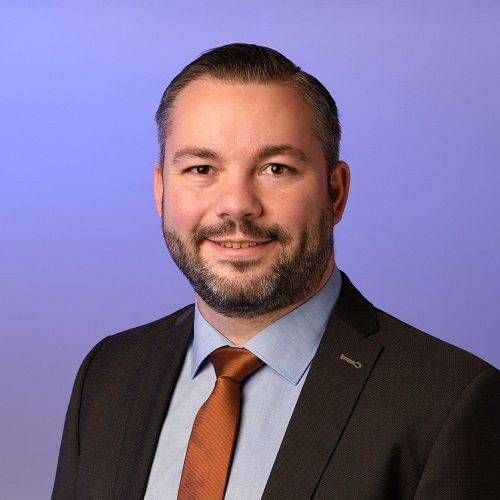
Stäubli Electrical Connectors AG

ZVEI e. V., German Electro and Digital Industry Association
09:40 - 10:10 a.m.
Focus: Sustainability
Sustainability meets Connector Development
-
Abstract
Within 2 years, the sustainability aspect has become a fixed component of the "must-have list" alongside the functional requirements. This requires new strategies and methods in development and engineering.
How "green" new products ultimately are stands and falls with innovative materials, production processes and designs. What is needed are not only innovations that focus on functional properties - performance - but also details that were not so much in focus in previous years -> priorities are changing:
Saving weight and resources, durability, low pollution - or simply tailor-made for our "green" future. Less is more - where there is less, less has to be produced and transported and less can break down.
The presentation gives an insight into approaches in the development and production of connectors to reduce the PCF value (Product Carbon Footprint). Possibilities will be presented to make material utilization more efficient in combination with the design and production process, to combine performance and miniaturization in the best possible way and to develop new innovative surface coating processes and layer systems suitable for the application.
TE Connectivity Germany GmbH
TE Connectivity Germany GmbH
10:10 - 10:40 a.m.
Focus: Sustainability
Technical Challenges in Moving to Lead-Free Connectors
-
Abstract
After the exemptions of recent years, it can currently be assumed that "lead-free" will be the norm by mid-2026. This will result in challenges for the metal and electrical industry that should not be underestimated. Especially in times of resource scarcity and increased energy costs.
The presentation is intended to show how Phoenix Contact is positioning itself in the course of the sustainable corporate orientation on the subject of RoHS and is leading the way in the market. In the end, of course, the focus is on the customer, but the focus of this presentation is on the technical issues surrounding "lead-free" connectors and their components.
For example, the general technical challenges of switching to lead-free connectors will be outlined. It will be shown why the essentially important properties of machinability and cold formability are opposite in connectors made of lead-free alloys. In addition to this, there were other challenges that were met through technical innovations, supplier communication and constant further development of materials, tools and machines. Today, Phoenix Contact is already able to manufacture lead-free components, such as crimp contacts, in series in a process-safe manner.
PHOENIX CONTACT Gmbh & Co. KG
PHOENIX CONTACT Gmbh & Co. KG
10:40 - 11:10 a.m.
Coffee Break and Exhibition
11:10 - 11:40 a.m.
Focus: New Technologies (DC)
Connectors in DC Networks - a Limit of Standardization
-
Abstract
Connectors are enormously important components for the transmission of electrical energy in DC networks. For example, they connect renewable energies with corresponding consumers and are thus a small building block in the decarbonization of industry. However, it is important to consider that capacitive and inductive loads, for example, can have an impact on service life.
Although DIN EN 61984 sets basic requirements for connectors, it is not sufficient to cover the full profile of requirements. Other parameters must be taken into account, such as the distinction between capacitive and inductive loads or the definition of precise load spectra.
Different load spectra have different effects on the functionality of the connectors. For example, a high capacitive load can cause high inrush currents to flow for a short time, which can damage the contacts and thus impair their functionality. A high inductive load, on the other hand, can lead to material and user hazards during disconnection.
In this context, it is important that the connectors are matched to the respective load collectives to ensure optimum functionality. In this context, it is also advisable to pay attention to the high quality and reliability of the connectors in order to guarantee a long service life and availability of the devices.
In summary, connectors for DC networks play an important role and careful attention should be paid to capacitive and inductive loads or different load collectives during selection and dimensioning to ensure optimum functionality over a long service life.
PHOENIX CONTACT Gmbh & Co. KG
Marc Klimpel
PHOENIX CONTACT Gmbh & Co. KG
11:40 a.m. - 12:10 p.m.
Focus: New Technologies (Hybrid Connectors)
Standardized Connectors with Future Orientation, is that even possible?
-
Abstract
The development of decentralized automation technology is progressing at an ever faster pace, even though the entire spectrum from centralized main control cabinets to decentralized industrial PC controls is still represented. The connection of sensors and actuators via massive cable harnesses leading from a main control cabinet into the machine means an enormous potential for error in many respects. It also makes it more difficult to modularize systems.
Machines and systems must be flexible to set up and convert in order to reliably and cost-effectively meet today's demands for segmentation of machine modules, one-piece flow and increasing individualization of consumer goods and the like. In addition to plug-and-play solutions in the connector and software area, the decentralized approach of devices, such as servo drives, power supplies or PLC controls, is one of the drivers for the flexible and fast reactions to special events that are necessary for this.
The IEC standardization project 61076-2-118 is intended to provide device and connector manufacturers, as well as machine and system builders, with a platform for working through, solving and rethinking current and future problems of decentralized technology.
In our presentation, we would like to present application examples from all of the above-mentioned areas as well as future possibilities to make the entry into decentralized automation technology faster and easier!
Beckhoff Automation GmbH & Co. KG
12:10 - 12:40 p.m.
Focus: New Technologies (Qualification)
Hybrid Test Simulations and AI-Supported Models to Provide Electrothermal Parameters of Connectors
-
Abstract
When selecting connector components, the current carrying capacity is an important decision variable. This is expressed by the resulting current heating and is limited by the maximum permissible component temperature. In order to work economically, the minimum possible size is aimed for. Reliable and complete product data are necessary for planning at the user. In order to cover all applications and product designs, a large number of tests are required by the manufacturer. As an alternative to the classical series of tests, this paper describes the determination of electrothermal parameters in a hybrid process of laboratory tests and simulation. Starting from the virtual model, artificial intelligence methods are used to extend the database to individual load profiles and ambient temperatures. Instead of a rigid data sheet, such a model enables the planner as customer to individually and interactively query product data from the connector manufacturer. The article describes the balanced relationship between user benefit and modeling and maintenance effort of the data.
WAGO GmbH & Co. KG
12:40 - 1:50 p.m.
Lunch Break and Exhibition
1:50 - 2:50 p.m.
Parallele Workshops
-
Leak Testing of Connectors in the Production Process
Focus: Testing & Inspection
Speaker: Dr. Joachim Lapsien | Ceta Testsysteme GmbH
Description: Based on the basics of leak testing, this workshop presents a practical guide for leak testing different types of connectors. This will be complemented by a variety of practical tips for the practical implementation of leak testing .as well as an overview of optimizations of the testing process (e.g. increasing the signal, reducing the testing time).
What you will learn:
- IP protection types for water testing / type testing versus routine testing.
- Leak testing during production with compressed air / Adaptation of connectors
- Practical examples / Practical tips / Optimization possibilities / FAQ
-
Measurement System Analysis to Optimize Quality Controls Using X-Ray Fluorescence Analysis (XRF)
Focus: Inspection & Testing
Speaker: Dr. Konstantinos Panos | Helmut Fischer GmbH
Description: Modern production is characterized by high quality standards combined with high throughput. In this context, it is not only necessary to optimize the production processes with regard to quality and throughput, but also the testing and measuring processes. In this context, measurement system analysis (MSA) provides valuable information and hints on possible optimization measures for test and measurement technology. Since MSA is often required and performed anyway, recommendations for further optimization can be derived without additional effort. However, this also requires an understanding of the interrelationships, which we would like to illuminate in more detail here.
For a better understanding, we will first go into the relevant basics of statistics and measurement system analysis. Influencing factors for the measurements with the X-ray fluorescence analysis instrument are discussed and the connection with the MSA is established. Accuracy and scatter can each be considered individually for an XRF measuring instrument. This already leads to relevant conclusions for optimization.
In addition, in a practical part, some of the easily accessible influencing factors and intervention possibilities can be reproduced on the instrument. The aim is to enable you to carry out the shown optimizations on your device independently.
-
"Hands on SPE": Connectors, System Cables, Wiring and Active Devices in Use
Focus: Single Pair Ethernet
Speaker: Matthias Fritsche | SPE Industrial Partner Network e.V.
Description: In this workshop, participants will have the opportunity to see all components for themselves and to experience a sample application in real operation. The workshop will be equipped with components and products from numerous network companies. At the beginning, a short introductory lecture is planned to present the products, devices and the sample application. Afterwards, the participants will have the opportunity to test individual products themselves and put them into operation. Thus, it is planned to install self-assembled cables into the sample application. Finally, the sample application from the field of sensors and actuators will be shown in operation and an exchange about useful applications of SPE can take place.
-
Differential Data Transmission in Data Buses such as USB and Ethernet
Focus: High Data Rates
Speaker: Dr. Thomas Gneiting | AdMOS GmbH
Description: Modern serial data buses like USB or Ethernet are based on the principle of differential data transmission. The workshop will give an insight into the basic electromagnetic processes of this form of data transmission. The focus is on the greater insensitivity to external interference and the extensive independence from grounding compared to signal transmission via single conductors.
We deal with and explain the basic concepts such as common-mode and push-pull operation, impedance, crosstalk or mode conversion. Differential S-parameters are also discussed in this context.
Application examples are used to show the requirements for connectors for differential line systems. We will look at propagation time differences between the individual conductors and their compensation as well as the course of the impedance to avoid reflections. The avoidance of common-mode interference in the connector through symmetrical design and shielding for unavoidable interference round off this point.
The participants will get a well understandable visualization of these effects by animated 3D simulations while largely avoiding the representation of the complex mathematical relationships. In addition, we conduct experiments with the vector network analyzer, where the participants can verify the addressed effects by measurements of simple and easy to understand test circuit boards.
-
"Did it really click?" - Acoustic Test Systems for Connectors in Automobile Production
Focus: Testing & Inspection
Speaker: Danilo Hollosi | Fraunhofer IDMT
Description: In modern industrial production, especially in automotive engineering, many connections between individual components are no longer screwed, glued or welded, but held together by plug-in connections. At the same time, the topics of electromobility and also modern wiring system architectures are significantly shaping the requirements for plug-in connections. The basic rule is that if connections are not set correctly, this results in time-consuming reworking and higher production costs.
Using various practical application scenarios, we will demonstrate that the audible "click" is of particular importance, especially in manual assembly processes. We look at typical workflows on production lines, describe real challenges for workers and derive requirements for ideal connectors.
Finally, we show how manual assembly processes can benefit from acoustic test systems as part of a worker support system and which framework conditions must be met for the value-added use of such systems.
-
Qualification of cable assemblies for industrial applications
Speaker: Joachim deBuhr | Euroconnectors
Werner Häring | Euroconnectors
Focus: Cable confection
Description: Participants will gain a well-founded, comprehensive and detailed insight into the parameterization of sophisticated cable assemblies (KKF) guided by the generic process model: material selection, process qualification, production, quality assurance and cost optimization. Both worlds are brought together: Cable and connector views are presented in a practical and clear manner. Participants learn to assess technical requirements, processes and quality characteristics and also to evaluate them from an economic point of view. Interactive practical exercises anchor new competencies under expert guidance (materials are provided by Lacon). Sequence and technical details 1. Getting to know the basic parameters of cables and connectors: environment, use, electrical properties (optional EMC, demand and life cycle) 2. Design drivers of the connection in terms of manufacturing - cables: transmission types, designs, contacting, ambient temperature, certifications, application categories, wire types, etc.). - Connectors: types of construction, connection types, contacting, environmental influences, EMC requirements, standards and other quality requirements - Qualification procedures in the test program according to EN 60352-2 (contact resistance, micrographs, crimp force determination, pull-off tests, crimp height measurement) 3. Characteristics of good KKF drawings and avoiding mistakes: Interaction and practical exercise 4. Learn alternative connection techniques and be able to classify them professionally with their advantages and disadvantages: Ultrasonic sealing (technology and operating principle, application examples and process, quality characteristics according to IPC/WHMA-A-620C 5. Definition of electrical series testing according to IPC/WHMA-A-620C: Being able to see and assess important test parameters 6. KKF documentation and visual work plan: Overview professional work preparation and compile documentation 7. Typical sources of error in KKF (interaction and practical exercise) 8. Understand and calculate industrial process capability, learn about value analysis and be able to assess it for own use cases.
2:50 - 3:10 p.m.
Coffee Break and Exhibition
3:10 - 3:40 p.m.
Focus: Qualification (data connectors)
"The Square must Go into the Round" - Challenges in Qualifying the HF Properties of Data Connectors
-
Abstract
Measurement technology is very limited at high frequencies and data rates with regard to electrical interfaces. There are only a few measurement and test devices that offer an alternative to the coaxial connection. If there are non-coaxial interfaces, they are almost always application-specific devices. An example would be network testers, or cable test devices (e.g. USB or LAN).
However, these devices do not provide insight into the performance of components belonging to an application, such as connectors or cables; here, general high-frequency measurement technology must be used. In these cases, the problem arises that the "square has to go into the round". Thus, a suitable bridge must be built from the test object to the coaxial test port.
In this lecture we will explain the associated requirements, sources of error and possible solutions.
In addition, the participants can examine the test setup at our booth and I will be available for professional exchange.
Harting Electric Stiftung & Co. KG
3:40 - 4:10 p.m.
Focus: Single Pair Ethernet
Optimizing the Signal Integrity and Impedance of SPE Connectors
-
Abstract
The demands on the performance of connection technology are constantly increasing. With the ever-increasing networking of modern devices, the number of interfaces is also increasing. The goal is to achieve the highest possible signal integrity, i.e. data transmission that is impaired as little as possible.
One connector property that is directly related to signal integrity is impedance. Deviations from the nominal impedance reflect the data signal back to the transmitter. If the reflections become too high, the reflected and transmitted signals overlap. This can lead to interference in a transmission system.
The impedance of a connector is influenced by many factors, such as material selection, geometry and component arrangement of the signal-carrying components within the connector.
In the lecture, the cause and effect mechanisms of the influencing variables on the connector impedance will be presented. Using practical examples from the development of the Single Pair Ethernet portfolio at Phoenix Contact, it will be explained how the influencing variables can be used specifically during product development to optimize signal integrity and impedance. Because with regard to connector impedance, no generally valid statements can be made about the best geometries or materials, because the interaction of the influencing variables in the overall system is always decisive.
The presentation will show users how these properties are implemented in the ONEPAIR connector series, which new products the system includes, and what added value SPE offers in initial applications.
The paper thus targets the interface between mechanical design and signal integrity in connector development and is aimed at developers, laboratory engineers and users.
PHOENIX CONTACT Gmbh & Co. KG
4:10 - 4:40 p.m.
Focus: Single Pair Ethernet
Single Pair Ethernet: Get 100 Meters with 100 Mbit, is that Possible?
-
Abstract
The IEEE specifications define minimum requirements for the range of single pair Ethernet connections. In the case of 100BASE-T1, the 802.3bw specification requires at least 15 m. However, practical implementations can far exceed these minimum requirements. Proper selection of cables, connectors, and semiconductor components results in communication channel characteristics that enable a range in excess of 100 m, as will be demonstrated in this presentation using an example implementation.
Thus, the same applications could be served with single-pair Ethernet transmissions as with two- or four-pair Ethernet transmissions, which are already widely used today.
Weidmüller Interface GmbH & Co. KG
Microchip Technology Germany II GmbH & Co.KG
4:40 - 5:10 p.m.
Coffee Break and Exhibition
5:10 - 5:40 p.m.
Focus: Manufacturing
Hot Lithography: Flexibility Through Digital Production
-
Abstract
Trends such as digitalization, e-mobility and miniaturization are constantly demanding new solutions from the electronics industry, and connectors play an important role in this. To keep pace, manufacturers have to reconcile customer-specific requirements, a wide range of quantities and short delivery times. Additive manufacturing offers the necessary production flexibility and design freedom. Cubicure's printing technology and extensive materials portfolio, combined with scalable post processing, also bridge the gap from prototyping to producing millions of sales-ready parts per year. With their electrical and insulation properties, Cubicure FR materials meet the need for flame-retardant and heat-resistant materials while complying with UL94 V-0 standards. Leading solution providers have already evaluated Cubicure's Hot Lithography process as a tool-less manufacturing alternative to injection molding and promising application examples can be shown.
On the one hand, we want to show how a scalable process (especially post-processing) must look like in order to allow series production with AM. Furthermore, we may show application examples of different manufacturers.
5:40 - 6:10 p.m.
Focus: Manufacturing
Automated Assembly of Connectors Using Industrial Robots - Challenges and Solutions
-
Abstract
In times of major geopolitical events, large manufacturing companies are increasingly relocating their sites back to the company's origin. In order to remain competitive despite higher wage levels, more and more companies are deciding to automate their processes. The processes and components developed over many decades in the cable and connector assembly sector were designed and optimized for manual production and present companies with the following exemplary challenges when it comes to automation:
- Dealing with component and process tolerances.
- Handling of bending slack components
- Recognition and assignment of components
- High number of variants and associated changeover times
- Error handling and quality assurance
In addition to application-related solution approaches, the lecture is intended to recommend which of these problems can be solved by means of flexible robotics and for which boundary conditions the classic special machine construction is the more suitable way.
ArtiMinds Robotik
6:10 p.m.
Final Discussion and Information about the Evening Event
ELEKTRONIKPRAXIS
Wednesday 14 June 2023
Time
Lecture Title
Speaker
09:10 - 09:40 a.m.
Focus: PCB Connectors
Requirements for Miniaturized PCB Connectors
-
Abstract
The paper explains the need for miniaturization of terminal block technology using space-constrained example applications. Terminal manufacturers and device developers cooperate to design universal solutions for the most important challenges in terms of performance (functional diversity), user-friendliness (e.g. for overhead mounting,) and electrical specifications (pitch and conductor cross-section). In the article, measures for miniaturization are shown: Adaptation of terminal bodies, housings and materials for increased requirements. Conflicting objectives are also discussed (technology, material, ergonomics, electrical and mechanical specifications, reliability) and considerations for automated SMT/THT assembly (using pick & place) are included. Using space-saving push-in individual terminal blocks, it is shown how many requirements can be implemented without sacrificing advantages, including low overall height (6.6 mm), appearance (color coding), flexible placement and the shortest possible connection time.
METZ CONNECT GmbH
METZ CONNECT GmbH
09:40 - 10:10 a.m.
Focus: PCB Connectors
High Speed Board-to-Board-Steckverbinder
-
Abstract
The transmission of high-frequency data signals within a device between PCBs places special demands on the board-to-board connectors to be used.
The presentation will show how high data integrity can be achieved with impedance-optimized board-to-board connectors, their pin assignment and the corresponding PCB layer structure. Corresponding simulations and measurements are presented and their results and parameters explained. In addition to the impedance curve, this also includes the attenuation and reflection behavior as well as crosstalk effects caused by adjacent differential signal pairs or single-ended signals.
Phoenix Contact offers different types of board-to-board connectors in its FINEPITCH portfolio, which are suitable for data transmission rates of up to 52 Gbps. These connectors are characterized by a high degree of freedom in pin assignment and PCB arrangements to be connected and are flexibly suitable for numerous applications and data transmission protocols.
PHOENIX CONTACT Gmbh & Co. KG
PHOENIX CONTACT Gmbh & Co. KG
10:10 - 10:40 a.m.
Focus: Press-in Technology
The Challenge of Press-fit Technology
-
Abstract
The press-fit zone has proven itself in the automotive industry as an alternative solution to soldering technology for decades and is preferred for safety-critical applications such as airbags, ABS and engine controls. In order to achieve optimum robustness and the lowest possible failure rate in the application, the geometry and material selection of the press-fit zone, the through-hole plating in the PCB and the appropriate process for PCB assembly must already be defined in the design-in process.
The main points of the presentation:
- Basics and advantages of the press-fit zone
- Selection of press-fit zone: geometry, surface, material selection, hole specification, processing
- IPC standard press-fit zone, reparability, sustainability
ept GmbH
10:40 - 11:10 a.m.
Coffee Break and Exhibition
11:10 - 11:40 a.m.
Focus: Surfaces/Testing Technology
Technical Cleanliness in Electrical Engineering
-
Abstract
In the automotive sector, the importance of component cleanliness has steadily increased since the publication of VDA 19.1 in 2005 and later ISO 16 232, especially for electrotechnical components, assemblies and units. These specifications do not specify any concrete cleanliness limits. However, the analysis system introduced makes contaminations visible that previously went unnoticed.
Although VDA 19.1 advises that a cleanliness definition should only be required for relevant parts, cleanliness requirements can now be found on almost all newly designed components.
In some cases, high cleanliness requirements pose unmanageable challenges for production and thus high or even unmanageable production costs in the project phase.
A working group of the ZVEI has been formed to survey the current state in the electrical engineering sector, to identify sources of contamination and possible improvements. One of the studies dealt with the comparison of different cleaning processes and their performance. Furthermore, series of measurements were carried out for a calculation model which provided a possibility to determine the risk of an electrical potential short circuit approximately and to define the required cleanliness limit values more pragmatically.
Electrical connectors introduce significant contamination loads into printed circuit board assemblies. It makes sense to look at this topic outside of the automotive industry to find possible synergies and/or solutions.
The presentation will give an insight into the requirements for technical cleanliness in the automotive industry and the approaches to achieve them.
TE Connectivity Germany GmbH
TE Connectivity Germany GmbH
11:40 a.m. - 12:10 p.m.
Focus: Surfaces
Overcoming Cold-Welding in Silver Contact Finish
-
Abstract
High-performing electronic components requires modern electrical contacts to have high conductivity, low coefficient of friction (COF), high durability, and thermal stability for facile and reliable transfer of signal and power. The high corrosion and wear resistance of hard gold has resulted in its use as the industry standard for reinsertable contact finish, but a more cost-effective alternative is desired. Despite the lower contact resistance and cost, the tendency of silver to cold-weld requires high thicknesses in these applications. The resulting poor wear and high COF limits its utility as a reusable contact finish.
DuPont Electronic and Industrial
12:10 - 12:40 p.m.
Focus: Surfaces
Electrical Contact Lubricants - A Selection Guide
-
Abstract
Lubricants are an essential design element to maintain and improve the functionality of electrical connectors. Essentially, lubricants perform three main tasks in electrical contacts:
- Wear protection
- Corrosion protection
- Friction reduction
To meet the requirements, the selection of the right lubricant is essential. The characteristics of the lubricant are derived from the general conditions of the application.
In summary, the lubricant is an essential design element in electrical connectors. In order to meet the technical requirements, it is essential to select the right lubricant, taking into account the application-specific ambient conditions, chemical composition and the desired method of application. Correctly selected, lubricants increase service life, improve performance and reduce the failure rate of electrical contacts.
FUCHS LUBRICANTS GERMANY GmbH
12:40 - 1:40 p.m.
Lunch Break and Exhibition
1:40 - 2:40 p.m.
Parallel Workshops
-
Leak Testing of Connectors in the Production Process
Focus: Testing & Inspection
Speaker: Dr. Joachim Lapsien | Ceta Testsysteme GmbH
Description: Based on the basics of leak testing, this workshop presents a practical guide for leak testing different types of connectors. This will be complemented by a variety of practical tips for the practical implementation of leak testing .as well as an overview of optimizations of the testing process (e.g. increasing the signal, reducing the testing time).
What you will learn:
- IP protection types for water testing / type testing versus routine testing.
- Leak testing during production with compressed air / Adaptation of connectors
- Practical examples / Practical tips / Optimization possibilities / FAQ
-
Measurement System Analysis to Optimize Quality Controls Using X-Ray Fluorescence Analysis (XRF)
Focus: Inspection & Testing
Speaker: Dr. Konstantinos Panos | Helmut Fischer GmbH
Description: Modern production is characterized by high quality standards combined with high throughput. In this context, it is not only necessary to optimize the production processes with regard to quality and throughput, but also the testing and measuring processes. In this context, measurement system analysis (MSA) provides valuable information and hints on possible optimization measures for test and measurement technology. Since MSA is often required and performed anyway, recommendations for further optimization can be derived without additional effort. However, this also requires an understanding of the interrelationships, which we would like to illuminate in more detail here.
For a better understanding, we will first go into the relevant basics of statistics and measurement system analysis. Influencing factors for the measurements with the X-ray fluorescence analysis instrument are discussed and the connection with the MSA is established. Accuracy and scatter can each be considered individually for an XRF measuring instrument. This already leads to relevant conclusions for optimization.
In addition, in a practical part, some of the easily accessible influencing factors and intervention possibilities can be reproduced on the instrument. The aim is to enable you to carry out the shown optimizations on your device independently.
-
"Hands on SPE": Connectors, System Cables, Wiring and Active Devices in Use
Focus: Single Pair Ethernet
Speaker: Matthias Fritsche | SPE Industrial Partner Network e.V.
Description: In this workshop, participants will have the opportunity to see all components for themselves and to experience a sample application in real operation. The workshop will be equipped with components and products from numerous network companies. At the beginning, a short introductory lecture is planned to present the products, devices and the sample application. Afterwards, the participants will have the opportunity to test individual products themselves and put them into operation. Thus, it is planned to install self-assembled cables into the sample application. Finally, the sample application from the field of sensors and actuators will be shown in operation and an exchange about useful applications of SPE can take place.
-
Differential Data Transmission in Data Buses such as USB and Ethernet
Focus: High Data Rates
Speaker: Dr. Thomas Gneiting | AdMOS GmbH
Description: Modern serial data buses like USB or Ethernet are based on the principle of differential data transmission. The workshop will give an insight into the basic electromagnetic processes of this form of data transmission. The focus is on the greater insensitivity to external interference and the extensive independence from grounding compared to signal transmission via single conductors.
We deal with and explain the basic concepts such as common-mode and push-pull operation, impedance, crosstalk or mode conversion. Differential S-parameters are also discussed in this context.
Application examples are used to show the requirements for connectors for differential line systems. We will look at propagation time differences between the individual conductors and their compensation as well as the course of the impedance to avoid reflections. The avoidance of common-mode interference in the connector through symmetrical design and shielding for unavoidable interference round off this point.
The participants will get a well understandable visualization of these effects by animated 3D simulations while largely avoiding the representation of the complex mathematical relationships. In addition, we conduct experiments with the vector network analyzer, where the participants can verify the addressed effects by measurements of simple and easy to understand test circuit boards.
-
"Did it really click?" - Acoustic Test Systems for Connectors in Automobile Production
Focus: Testing & Inspection
Speaker: Danilo Hollosi | Fraunhofer IDMT
Description: In modern industrial production, especially in automotive engineering, many connections between individual components are no longer screwed, glued or welded, but held together by plug-in connections. At the same time, the topics of electromobility and also modern wiring system architectures are significantly shaping the requirements for plug-in connections. The basic rule is that if connections are not set correctly, this results in time-consuming reworking and higher production costs.
Using various practical application scenarios, we will demonstrate that the audible "click" is of particular importance, especially in manual assembly processes. We look at typical workflows on production lines, describe real challenges for workers and derive requirements for ideal connectors.
Finally, we show how manual assembly processes can benefit from acoustic test systems as part of a worker support system and which framework conditions must be met for the value-added use of such systems.
-
Qualification of cable assemblies for industrial applications
Speaker: Joachim deBuhr | Euroconnectors
Werner Häring | Euroconnectors
Focus: Cable confection
Desciption: Participants will gain a well-founded, comprehensive and detailed insight into the parameterization of sophisticated cable assemblies (KKF) guided by the generic process model: material selection, process qualification, production, quality assurance and cost optimization. Both worlds are brought together: Cable and connector views are presented in a practical and clear manner. Participants learn to assess technical requirements, processes and quality characteristics and also to evaluate them from an economic point of view. Interactive practical exercises anchor new competencies under expert guidance (materials are provided by Lacon). Sequence and technical details 1. Getting to know the basic parameters of cables and connectors: environment, use, electrical properties (optional EMC, demand and life cycle) 2. Design drivers of the connection in terms of manufacturing - cables: transmission types, designs, contacting, ambient temperature, certifications, application categories, wire types, etc.). - Connectors: types of construction, connection types, contacting, environmental influences, EMC requirements, standards and other quality requirements - Qualification procedures in the test program according to EN 60352-2 (contact resistance, micrographs, crimp force determination, pull-off tests, crimp height measurement) 3. Characteristics of good KKF drawings and avoiding mistakes: Interaction and practical exercise 4. Learn alternative connection techniques and be able to classify them professionally with their advantages and disadvantages: Ultrasonic sealing (technology and operating principle, application examples and process, quality characteristics according to IPC/WHMA-A-620C 5. Definition of electrical series testing according to IPC/WHMA-A-620C: Being able to see and assess important test parameters 6. KKF documentation and visual work plan: Overview professional work preparation and compile documentation 7. Typical sources of error in KKF (interaction and practical exercise) 8. Understand and calculate industrial process capability, learn about value analysis and be able to assess it for own use cases.
2:40 - 3:00 p.m.
Coffee Break and Exhibition
3:00 - 3:30 p.m.
Focus: Plastics & Processing
Plastic Material in Connector Industry
-
Abstract
Since the COVID-19 crisis, a lot of disruptions have been observed on raw material supply-chain. Therefore connector industry’s actors need to focus on finding reliable alternatives for critical plastic materials without decreasing end-product technical specifications in terms of electrical, thermal and mechanical properties such as environmental requirements.
Würth Elektronik France SAS
3:30 - 4:00 p.m.
Focus: Plastics & Processing
Ultramid and Ultradur in Colour-stable Orange for High-Voltage Connectors
-
Abstract
The technology in the electric powertrain is changing. New components are needed for battery-powered vehicles. High-voltage (HV) connectors are essential for coupling the battery and electric motor. For safety reasons, most of these components are pre-colored orange (in Europe RAL 2003).
This type of HV connector must meet a number of technical requirements: For example, the so-called CTI (Comparative Tracking Index) of 600 is often required for HV connectors. In terms of flame resistance, various UL tests are essential (e.g. UL94 V0 rating). In addition, hydrolysis resistance, good mechanical performance and color stability are important product characteristics. Recent trends show a demand for laser-markable products. The aim is to provide the ideal component to meet any requirement.
In terms of color stability, PA6 and PA66 are the focus of further development. While PBT has good color stability, polyamides tend to turn brownish under the influence of heat and aging. The latest achievements are PA6 as well as PA66, which maintain their bright orange color stably even after heat aging (130 °C / 1000 h).
BASF SE
4:00 p.m.
Closing Discussion and Conclusion User Congress Connectors 2023
ELEKTRONIKPRAXIS






